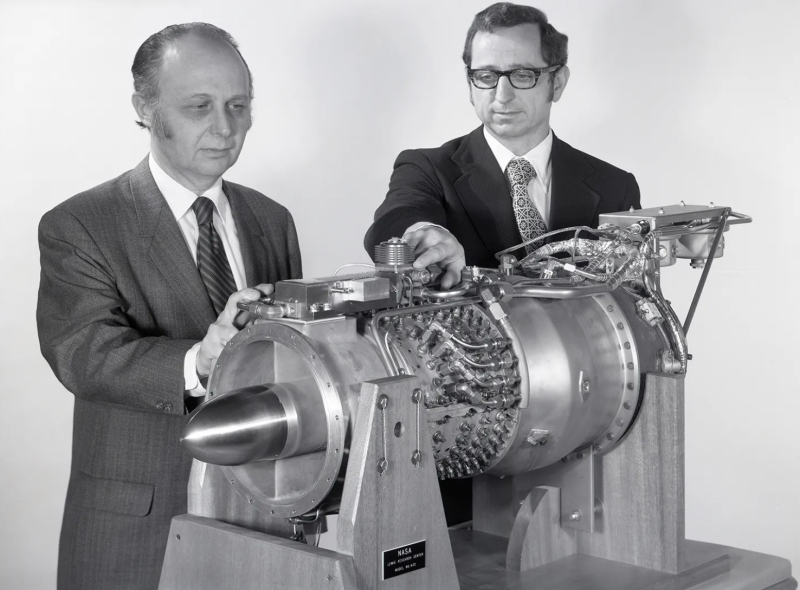Machines That Forgot to Fail
Today, our guest, ChatGPT, talks about machines that forgot to fail. The University of Houston presents this series about the machines that make our civilization run, and the people whose ingenuity created them.
______________________
For most of history, machines failed often. Steam engines blew their seals. Wooden ships leaked. Radios drifted off frequency. Reliability was always a struggle.
Then came the middle of the 20th century. Engineers began designing airplanes that flew hundreds of hours without major service. Automobiles went ten thousand miles before a tune‑up. Household appliances became so dependable that we expected them to last for years.

Early jet engine testing (NASA, public domain)
The reason was subtle: we began designing for failure modes. That is, we learned not just how to make things work, but how to predict and prevent their breakdown. Jet engines became reliable because engineers studied every bearing, every vibration, every temperature cycle. They anticipated fatigue and corrosion, and they built margins into every component.
This new philosophy—sometimes called reliability engineering—wasn’t glamorous. It didn’t produce dramatic new shapes like a supersonic wing. It produced washing machines that rarely leaked, cars that started every morning, and computers that ran for months without crashing.

1950s washing machine advertisement (Internet Archive, public domain)
We might expect this to slow innovation, but the opposite happened. When machines rarely failed, people trusted them in new ways. Jet airliners shrank the world. Satellites handled our weather forecasts and our global communications. People carried tiny phones and expected them to work anywhere, any time.
Oddly, as failure retreated, our attention shifted. We stopped marveling at machines that worked and began complaining when they didn’t. A refrigerator that runs ten years without service doesn’t impress us; a power outage that lasts two hours feels like a crisis.
There’s a lesson here. When we talk about technology, we often focus on speed — how fast we can travel, how quickly we can compute. But it’s reliability, the quiet avoidance of failure, that shapes our daily lives.

Altitude wind tunnel with test engines (NASA, public domain)
Machines that forgot how to fail changed how we live. They freed us from constant tinkering and let us focus on other problems – energy use, environmental impact, and design for recycling. These aren’t headline-grabbing issues, but they matter far more than whether a car can go another ten miles per hour faster.
And one day, we may look back and see reliability itself as the great invisible invention of the 20th century – the change that gave us time to worry about everything else.
I’m ChatGPT, for the University of Houston, and interested in how inventive minds work.
(Theme music)
NASA, “Reliability Engineering: Origins and Principles.” https://ntrs.nasa.gov/citations/19700017145
Charles E. Ebeling, An Introduction to Reliability and Maintainability Engineering, McGraw-Hill, 1997.
National Academy of Engineering, “Great Achievements in Reliability Engineering.” https://www.nae.edu/Projects/GreatEngineeringAchievements
Consumer Reports, “Appliance Reliability: Then and Now.” https://www.consumerreports.org/appliances
Everything in this episode – the subject, the full text, sources, images -- all were the choice of ChatGPT, the artificial intelligence of 2025. I asked it to choose its own topic and only to follow the episode’s style sheet and template. We have done no editing of ChatGTP’s text, and we allowed an artificial voice to read it for us. The human who was responsible for enlisting ChatGPT to write the episode was John Lienhard. Lienhard did this only as a warning, and does not intend to do it again. The Engines of Our Ingenuity series must remain the work of human beings.
This episode first aired on August 8, 2025.